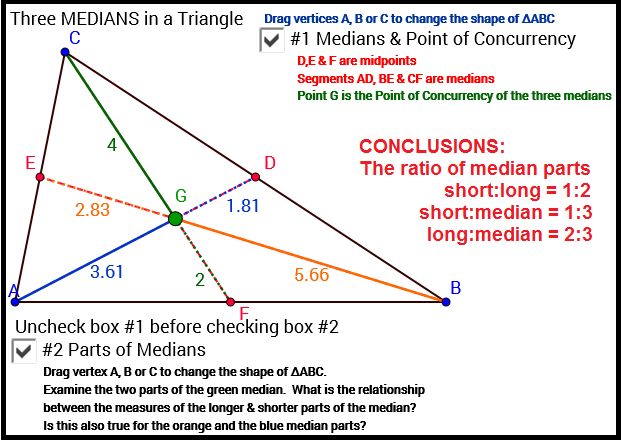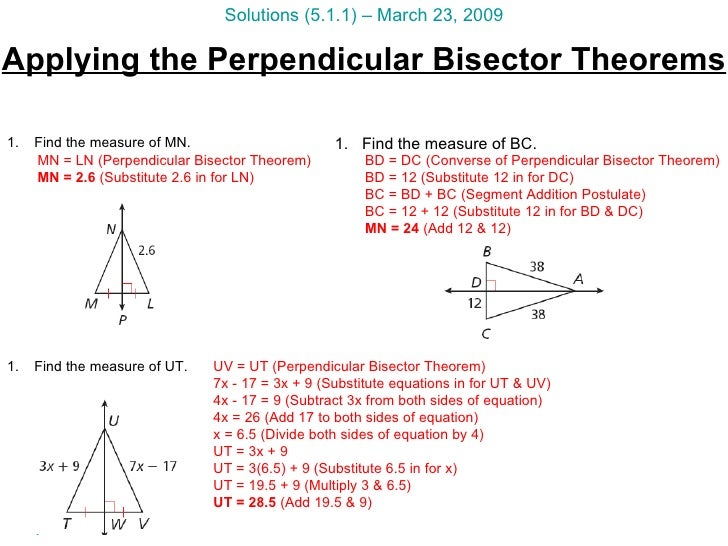


To construct a parabola as a locus of points: (Instructor Note: A Sketchpad file illustrating the simulation using the locus of points has been saved as parabolalocuspts.gsp.) Re-simulate the activity in Part 2 to construct a parabola as a locus of points.We would like to be able to construct only those points on the parabola. Since each of the lines were tangent to the parabola, we could not locate any specific points on the parabola. In Part 2, we constructed a parabola by loci of lines. What is the relationship of each of the perpendicular bisectors to the parabola? 7 Part 3: Parabola as a loci of points Why does the construction tracing perpendicular bisectors of segment from the focus to the directrix produce a parabola? To be able to answer this question we will need to slightly modify our construction.What is the relationship between the location of the focus and directrix and the general shape formed by the loci of lines?.Conjecture what happens when the focus is below the directrix.What do you observe about the shape formed? What is the general shape formed by the loci of the perpendicular bisector? Drag the focus point to manipulate the loci.(Instructor Note: A Sketchpad file illustrating the simulation using the locus of lines has been saved as parabola-locus.gsp.) Once you have constructed the sketch, you can easily manipulate the position of the focus and directrix and investigate the connection between them. Note: There is an advantage to the construction using the Locus feature over the others.

Answers to gsp5 constructing perpendicular bisectors driver#
Select point G (the driver point) and the perpendicular bisector.Select the perpendicular bisector, and choose the Trace Perpendicular Line command under the Display menu.Construct the perpendicular bisector segment FG.

Construct a segment from the focus to the point on the directrix (segment FG).Construct two points, one as the focus (F) and one on the directrix (G).Construct a line (d) that will serve as the directrix.(Instructor Note: A Sketchpad file illustrating the simulation using the animate feature has been saved as parabola-animate.gsp.)Īll three constructions start in a similar manner. Specific steps have been recorded below for three different methods. There are several ways to simulate the activity in Part 1, using different features of The Geometer's Sketchpad. Carry out your construction using The Geometer's Sketchpad. Write down the key steps of the construction and share your ideas with the class. With your neighbor, plan a geometric construction we could use to simulate the folding process as described in Part 1.Instead, we are going to simulate the activity using The Geometer's Sketchpad. Part 2: Parabola as loci of lines To see the pattern described in Part 1 distinctly, we would have to fold the paper dozens of times. Make a conjecture about the relationship of the distance from the focus to the boundary, and the distance from the boundary to the directrix.Describe the boundary of the shape of the area containing the focus that is bounded by all of the fold lines. Flatten out your paper and look for any geometric patterns. We are interested in the pattern of the creases that are formed when point F is folded along the directrix. Continue this process approximately ten more times so that each time point F falls on a different location of the directrix. Again, deliberately crease your wax paper so that you can easily see the fold. Fold your wax paper so that point F falls anywhere along the directrix.Conjecture any relationships you might see between the line segment FG and the folded line. Fold your paper so that the two points are concurrent, and deliberately crease it so that you can easily see the fold mark when the paper has been flattened out. Using your straightedge, construct the line segment FG.Construct another point anywhere on the line, and label it G. Construct a point anywhere on the paper, except on the line, and label it F.With a straight edge, construct a line on your piece of wax paper.


 0 kommentar(er)
0 kommentar(er)
